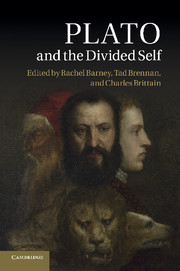Book contents
- Plato and the Divided Self
- Plato and the Divided Self
- Copyright page
- Contents
- CONTRIBUTORS
- Acknowledgements
- Introduction
- Part I Transitions to tripartition
- Part II Moral psychology in the Republic
- Part III After the Republic
- 9 Erôs before and after tripartition
- 10 The cognition of appetite in Plato's Timaeus
- 11 Pictures and passions in the Timaeus and Philebus
- 12 Soul and state in Plato's Laws
- Part IV Parts of the soul in the Platonic tradition
- Bibliography
- Index locorum
- General index
11 - Pictures and passions in the Timaeus and Philebus
from Part III - After the Republic
Published online by Cambridge University Press: 05 March 2012
- Plato and the Divided Self
- Plato and the Divided Self
- Copyright page
- Contents
- CONTRIBUTORS
- Acknowledgements
- Introduction
- Part I Transitions to tripartition
- Part II Moral psychology in the Republic
- Part III After the Republic
- 9 Erôs before and after tripartition
- 10 The cognition of appetite in Plato's Timaeus
- 11 Pictures and passions in the Timaeus and Philebus
- 12 Soul and state in Plato's Laws
- Part IV Parts of the soul in the Platonic tradition
- Bibliography
- Index locorum
- General index
Summary
- Type
- Chapter
- Information
- Plato and the Divided Self , pp. 259 - 280Publisher: Cambridge University PressPrint publication year: 2012
- 11
- Cited by

